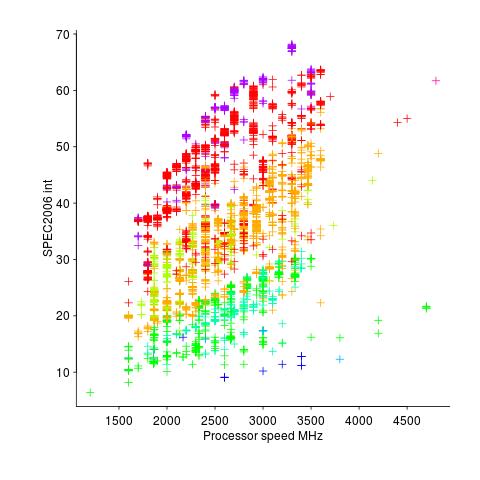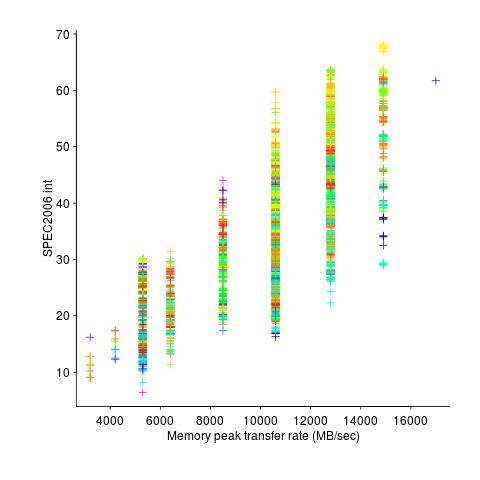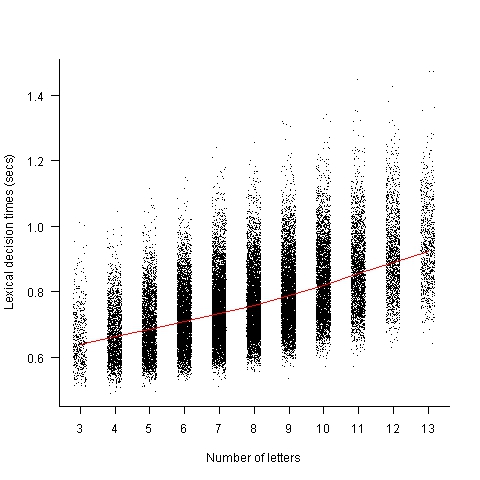Archive
Machine learning in SE research is a bigger train wreck than I imagined
I am at the CREST Workshop on Predictive Modelling for Software Engineering this week.
Magne Jørgensen, who virtually single handed continues to move software cost estimation research forward, kicked-off proceedings. Unfortunately he is not a natural speaker and I think most people did not follow the points he was trying to get over; don’t panic, read his papers.
In the afternoon I learned that use of machine learning in software engineering research is a bigger train wreck that I had realised.
Machine learning is great for situations where you have data from an application domain that you don’t know anything about. Lets say you want to do fault prediction but don’t have any practical experience of software engineering (because you are an academic who does not write much code), what do you do? Well you could take some source code measurements (usually on a per-file basis, which is a joke given that many of the metrics often used only have meaning on a per-function basis, e.g., Halstead and cyclomatic complexity) and information on the number of faults reported in each of these files and throw it all into a machine learner to figure the patterns and build a predictor (e.g., to predict which files are most likely to contain faults).
There are various ways of measuring the accuracy of the predictions made by a model and there is a growing industry of researchers devoted to publishing papers showing that their model does a better job at prediction than anything else that has been published (yes, they really do argue over a percent or two; use of confidence bounds is too technical for them and would kill their goose).
I long ago learned to ignore papers on machine learning in software engineering. Yes, sooner or later somebody will do something interesting and I will miss it, but will have retained my sanity.
Today I learned that many researchers have been using machine learning “out of the box”, that is using whatever default settings the code uses by default. How did I learn this? Well, one of the speakers talked about using R’s carat package to tune the options available in many machine learners to build models with improved predictive performance. Some slides showed that the performance of carat tuned models were often substantially better than the non-carat tuned model and many people in the room were aghast; “If true, this means that all existing papers [based on machine learning] are dead” (because somebody will now come along and build a better model using carat; cannot recall whether “dead” or some other term was used, but you get the idea), “I use the defaults because of concerns about breaking the code by using inappropriate options” (obviously somebody untroubled by knowledge of how machine learning works).
I think that use of machine learning, for the purpose of prediction (using it to build models to improve understanding is ok), in software engineering research should be banned. Of course there are too many clueless researchers who need the crutch of machine learning to generate results that can be included in papers that stand some chance of being published.
The Empirical Investigation of Perspective-Based Reading: Data analysis
Questions about the best way to perform code reviews go back almost to the start of software development. The perspective-based reading approach focuses reviewers’ attention on the needs of the users of the document/code, e.g., tester, user, designer, etc, and “The Empirical Investigation of Perspective-Based Reading” is probably the most widely cited paper on the subject. This paper is so widely cited I decided it was worth taking the time to email the authors of a 20 year old paper asking if the original data was available and could I have a copy to use in a book I am working on. Filippo Lanubile’s reply included two files containing the data (original files, converted files+code)!
How do you compare the performance of different approaches to finding problems in documents/code? Start with experienced subjects, to minimize learning effects during the experiment (doing this also makes any interesting results an easier sell; professional developers know how unrealistic student performance tends to be); the performance of subjects using what they know has to be measured first, learning another technique first would contaminate any subsequent performance measurements.
In this study subjects reviewed four documents over two days; the documents were two NASA specifications and two generic domain specifications (bank ATM and parking garage); the documents were seeded with faults. Subjects were split into two groups and read documents in the following sequences:
Group 1 Group 2 Day 1 NASA A NASA B ATM PG Day 2 Perspective-based reading training PG ATM NASA B NASA A |
The data contains repeated measurements of the same subject (i.e., their performance on different documents using one of two techniques), so mixed-model regression has to be used to build a model.
I built two models, one for number of faults detected and the another for the number of false positive faults flagged (i.e., something that was not a fault flagged as a fault).
The two significant predictors of percentage of known faults detected were kind of document (higher percentage detected in the NASA documents) and order of document processing on each day (higher percentage reported on the first document; switching document kind ordering across groups would have enabled more detail to be teased out).
The false positive model was more complicated, predictors included number of pages reviewed (i.e., more pages reviewed more false positive reports; no surprise here), perspective-based reading technique used (this also included an interaction with number of years of experience) and kind of document.
So use of perspective-based reading did not make a noticeable difference (the false positive impact was in amongst other factors). Possible reasons that come to mind include subjects not being given enough time to switch reading techniques (people need time to change established habits) and some of the other reading techniques used may have been better/worse than perspective-based reading and overall averaged out to no difference.
This paper is worth reading for the discussion of the issues involved in trying to control factors that may have a noticeable impact on experimental results and the practical issues of using professional developers as subjects (the authors clearly put a lot of effort into doing things right).
Please let me know if you build any interesting model using the data.
Peak memory transfer rate is best SPECint performance predictor
The idea that cpu clock rate is the main driver of system performance on the SPEC2006 cpu benchmark is probably well entrenched in developers’ psyche. Common knowledge, or folklore, is slow to change. The apparently relentless increase in cpu clock rate, a side-effect of Moore’s law, stopped over 10 years ago, but many developers still behave as-if it is still happening today.
The plot below shows the SPEC cpu integer performance of 4,332 systems running at various clock rates; the colors denote the different peak memory transfer rates of the memory chips in these systems (code and data).

Fitting a regression model to this data, we find that the following equation predicts 80% of the variance (more complicated models fit better, but let’s keep it simple):

where: Processor.MHz is the processor clock rate, memrate the peak memory transfer rate and memfreq the frequency at which the memory is clocked.
Analysing the relative contribution of each of the three explanatory variables turns up the surprising answer that peak memory transfer rate explains significantly more of the variation in the data than processor clock rate (by around a factor of five).
If you are in the market for a new computer and are interested in relative performance, you can obtain a much more accurate estimate of performance by using the peak memory transfer rate of the DIMMs contained in the various systems you were considering. Good luck finding out these numbers; I bet the first response to your question will be “What is a DIMM?”
Developer focus on cpu clock rate is no accident, there is one dominant supplier who is willing to spend billions on marketing, with programs such as Intel Inside and rebates to manufacturers for using their products. There is no memory chip supplier enjoying the dominance that Intel has in cpus, hence nobody is willing to spend the billions in marketing need to create customer awareness of the importance of memory performance to their computing experience.
The plot below shows the SPEC cpu integer performance against peak memory transfer rates; the colors denote the different cpu clock rates in these systems.

Word length lexical decision data
Well chosen identifier names can reduce the effort needed to understand the code containing them, compared to badly chosen identifiers.
An identifier might have a name that creates a semantic association in the mind of the reader about the role of the variable within a function definition (e.g., outer_counter) or an association with the information contained in the variable (e.g., max_fruit).
Code is not always read like prose text, developers might quickly scan through the source looking for something. In this case short identifier names are best because it reduces the number of characters that need to be scanned.
If you want to make life difficult for anyone who has to read your code, add a visually boring common prefix to every identifier, e.g., uacc. Readers start looking up a word in memory based in the first few characters while they process the remaining characters in a word, and eye tracking studies have found that that character sequence information is used to plan eye saccades (where to move the eyes next). A short bland sequence can really throw a spanner in the works of our over-learned reading skills.
I once researched a detailed analysis of the issues involved in a cost/benefit analysis of identifier selection. The good news is that I think I covered everything, the bad news is that the various kinds of data on human character sequence usage needed to perform the analysis was/is not available.
Today I got my hands on lots of performance data on the affect of word length on visual word recognition; thanks to Boris New (code and data)
The plot below shows the mean response time of 819 subjects performing a lexical decision task (respond yes/no on whether a character sequence is a word or nonword); each subject was tested on a subset of around 3,000 out of 33,608 words.

Note, this data is for single words. There are bound to be all sorts of interaction effects when two words/nonwords occur together in an identifier, e.g., semantic priming.
Word length is only one of several factors that have been found to effect people’s performance in processing words; others include the word frequency effect and age of acquisition (when the word was learned, which is correlated with word frequency).
Have fun with this.
Recent Comments